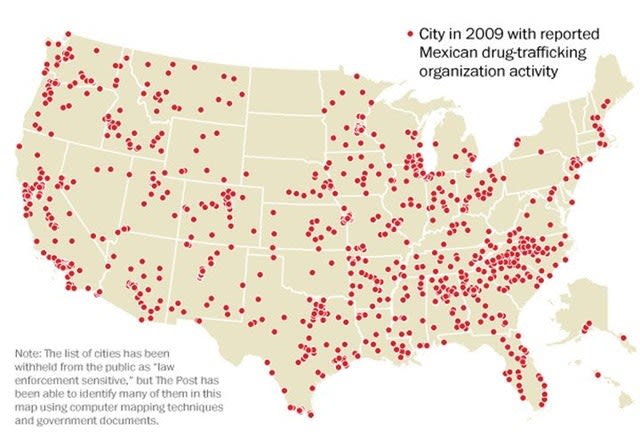It is interesting to me that the federal officers mentioned in the Washington Post article now working under President Obama's administration won't validate the figures obtained from their predecessors in the Bush or Clinton administrations. "It doesn't surprise me that the DEA doesn't support those numbers," said Michael F. Walther, who ran the agency between 2005 and 2012. "They like to paint a more positive portrait of the world. I stand by the work that our analysts did at NDIC."
Many of the sources for these statistics were law enforcement sensitive and when such statistics are reviewed later by other analysts who don't have the same sources, there are always questions. The Washington Post writes, "They say there are Mexicans operating here and they must be part of a Mexican drug organization," said Peter Reuter, who co-directed drug research for the nonprofit think tank Rand and now works as a professor at the University of Maryland. "These numbers are mythical, and they keep getting reinforced by the echo chamber."
So he's suggesting that red-necked bigoted cops made up these mythical figures because they were stereotyping Mexicans? More likely in my opinion, because these Mexican drug cartel operatives are not usually involved directly in the street sales, and the local distribution, they don't need to be present in large numbers. Instead the Mexican sources are supplying or transporting larger quantities of drugs to the wholesalers, who provide the drug distributors, who then supply the street venders. So it might be only a few people in a city who are DTO members and even fewer who are caught and reported.
Many of the Mexican cartel crimes in the illegal alien community go unreported. The ugly crimes of kidnapping, human trafficking, extortion, gang violence, and unsolved murders are often committed by Mexican cartel members in cities across the United States but remain unreported. These jurisdictions benefit by this under-reporting.
It has been my experience while lecturing to law enforcement agencies across the country that many jurisdictions are clueless about the activity of organized crime, and even more so about Mexican cartels, especially outside of the Southwest. Many jurisdictions are still in denial and are often influenced by the politically powerful "pro-illegal immigration" agenda. I think that maybe the Washington Post article is motivated more by this new political push to accept illegal aliens and less on questioning the validity of the old NDIC statistics.












